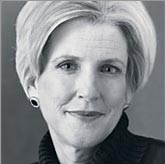The New York Times reports on a fascinating sort of Operational Risk – Pirates. The self-described Somali “Coast Guard” have seized a massive freighter owned by a firm transporting military equipment for the Belize-flagged Ukrainian vessel. Former Somali fishermen took it upon themselves to extort a “tax” on ships in their territorial waters. In this case, they claim they simply thought the ship looked big, and wanted to extort a levy. They claim that they didn’t realize that major weapons were on the ship.
The US and Russian governments are subsidizing the recovery of the military equipment, for an indeterminate customer in Kenya or Sudan. The USS Howard is reported to be circling the “Pirates”, and Russian Naval vessels are en route to support the recovery of the detailed ship.
I wonder if the Risk managers in Kenya or Sudan or the Ship’s owners in Belize or Ukraine had considered the subsidy from taxpayers in other countries to mitigate the risk of Pirates in their risk forecasting. Calculating the probability of hijackings on the high seas, although infrequent (like hurricanes, bank robbers and bankruptcies) can be estimated with some degree of uncertainty. The Times reports that in the past, companies and countries have simply payed off the Pirates, and this as fueled a cottage industry in ocean robbery, thereby increasing the probability of future lucrative attacks.
It appears that in the absence of taxpayer subsidies, Real Options analysts looking to hedge risk would look at several alternatives to mitigate pirate risks. First they could opt for contracts with Blackwater or some other international private police force. Or perhaps they would take a less expensive option and staff or train personnel with self defense techniques, or weaponry. It’s a high-stakes example of managerial Real Options applied to human resource investments. It reminds me of my first students in the late 1970’s. I taught Tae Kwon Do, which has specific techniques for thwartin gun-toting thugs. Because these skills take years to master, it might very well be cheaper to buy high-grade guns and cross-train employees who have other freighter roles to adapt and take defensive roles against the Somali hoards as needed. Or, perhaps there’s sufficient risk and skill required to add a surcharge for a security detail to protect ships whose courses require journeying close to pirate-filled waters such as Indonesia and Somalia. Managerial Real Options, such as those I teach and use with my friend and colleague, Johnathan Mun, with his software Real Options Valuation can calculate these uncertainties and value which choices might be useful “insurance policies” against these sorts of risks.
As of September 30, 8pm PST, the US Navy and Russia hadn’t successfully resolved the issue and the Somali “Coast Guard” were demanding $20 Million US dollars ($14M Euros). Some have speculated that they would settle for $2M. Clearly there’s some value to preventative defense measures, and only Real Options analysis can quantify and determine which options are “in the money”
Technorati Tags: Real Options, Training, Human Capital, Pirates, Business, Management, Decision Making, Somalia, Africa, Weapons, Self Defense







